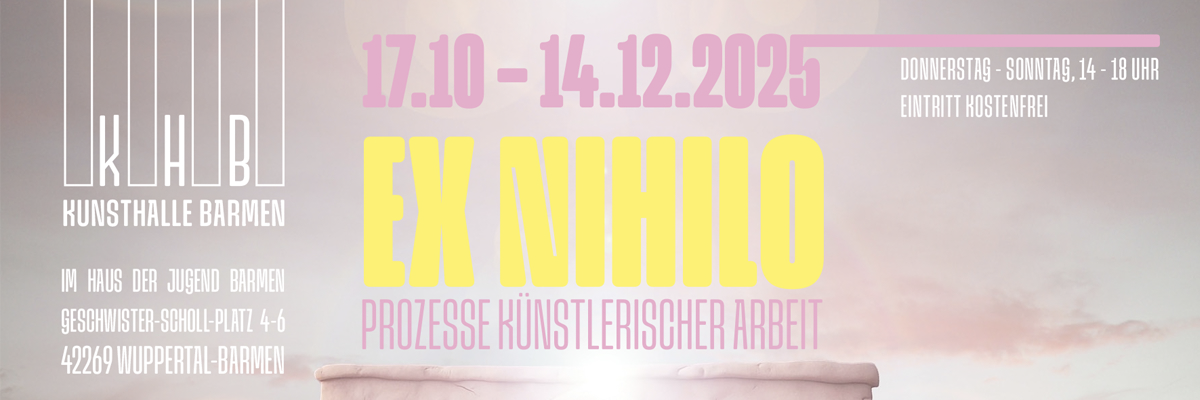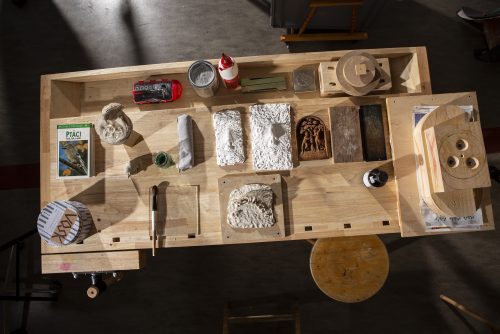
Black Palm – Sonja Cvitkovic (with editions by Verena Dengler, Isabelle Fein, HULFE, Michaela Meise, Michele di Menna, Hanna Schwarz; sculptural backdrop by Antonia Breme)
Reflection Series #1: Daily Deals
Project Info
- 💙 New Toni
- 💚 Antonia Breme
- 🖤 Black Palm – Sonja Cvitkovic (with editions by Verena Dengler, Isabelle Fein, HULFE, Michaela Meise, Michele di Menna, Hanna Schwarz; sculptural backdrop by Antonia Breme)
- 💜 1. Text: exhibition text (no author to be named) / 2. Text: Gabriela Acha
- 💛 Gernot Seeliger
Share on
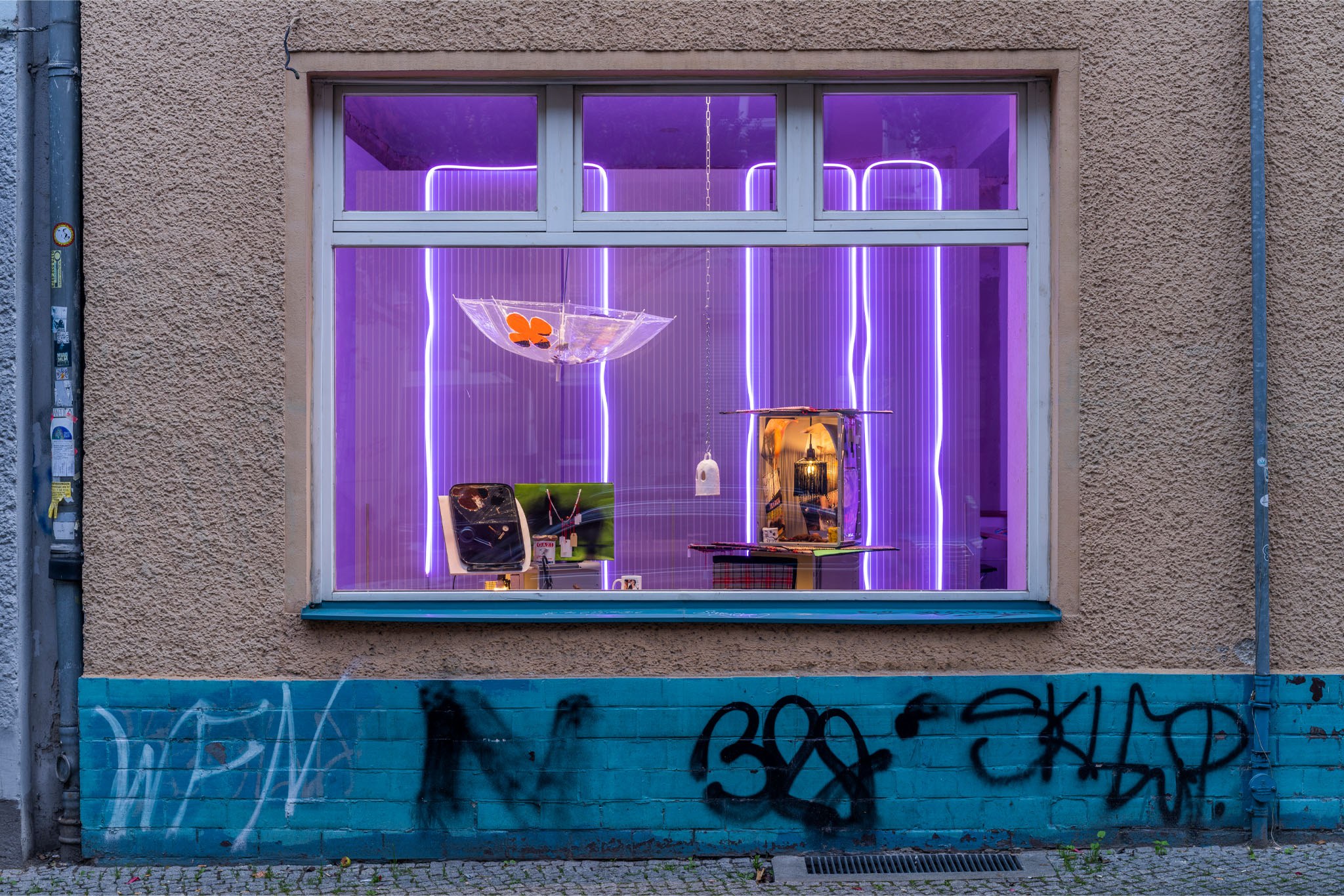
Black Palm – Sonja Cvitkovic, Daily Deals, New Toni, Berlin, 2022, Installation view
Advertisement
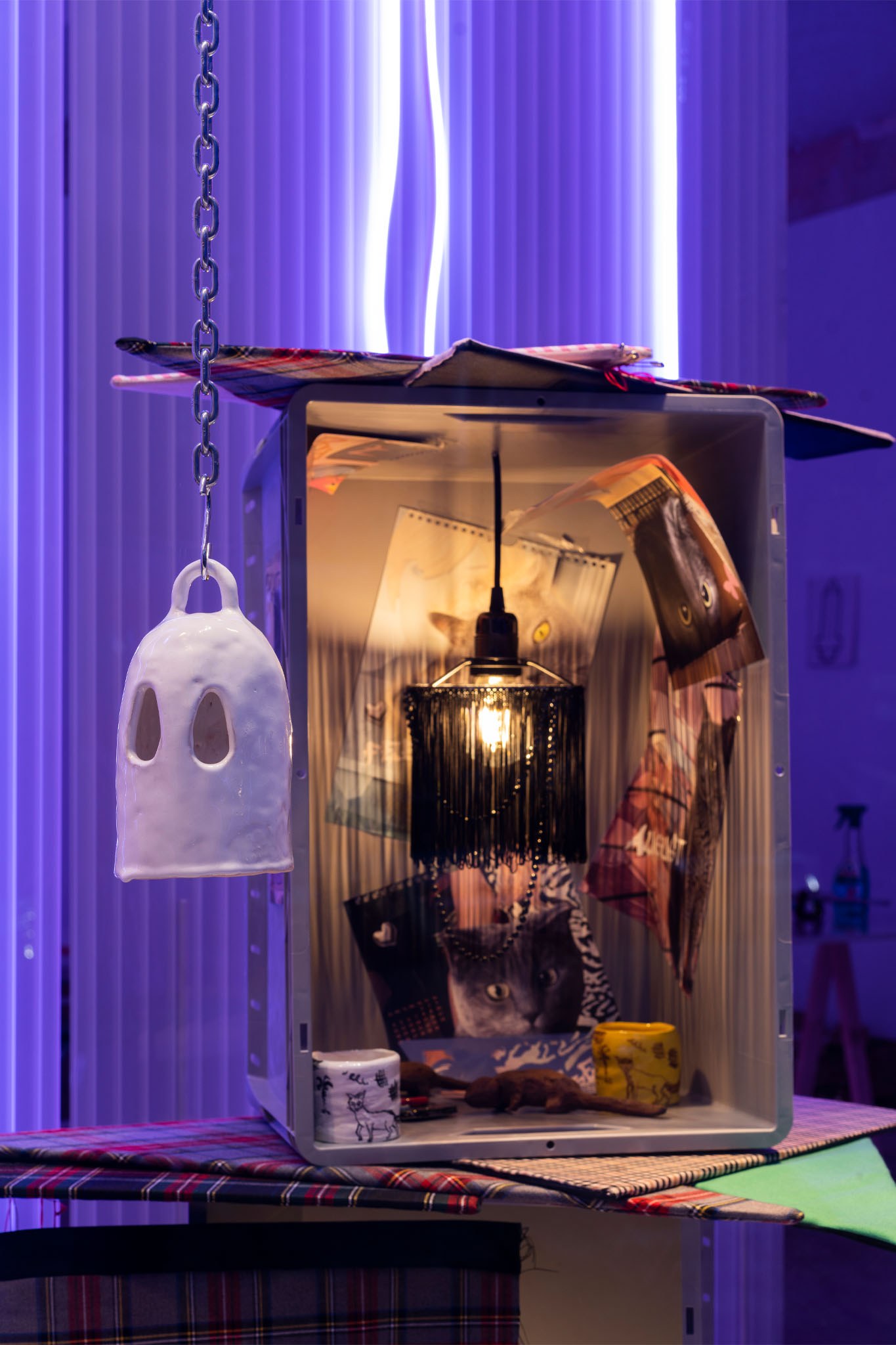
Black Palm – Sonja Cvitkovic, Daily Deals, New Toni, Berlin, 2022, Installation view, bell by Michele di Menna (glazed ceramic)

Black Palm – Sonja Cvitkovic, Daily Deals, New Toni, Berlin, 2022, Installation view, cups by Isabelle Fein (glazed ceramic), lamp by Sonja Cvitkovic (textil), rats by Michaela Meise (ceramic), iPhone by Hanna Schwarz (glazed ceramic)

Black Palm – Sonja Cvitkovic, Daily Deals, New Toni, Berlin, 2022, Installation view, umbrella by HULFE (plastic)

Black Palm – Sonja Cvitkovic, Daily Deals, New Toni, Berlin, 2022, Installation view
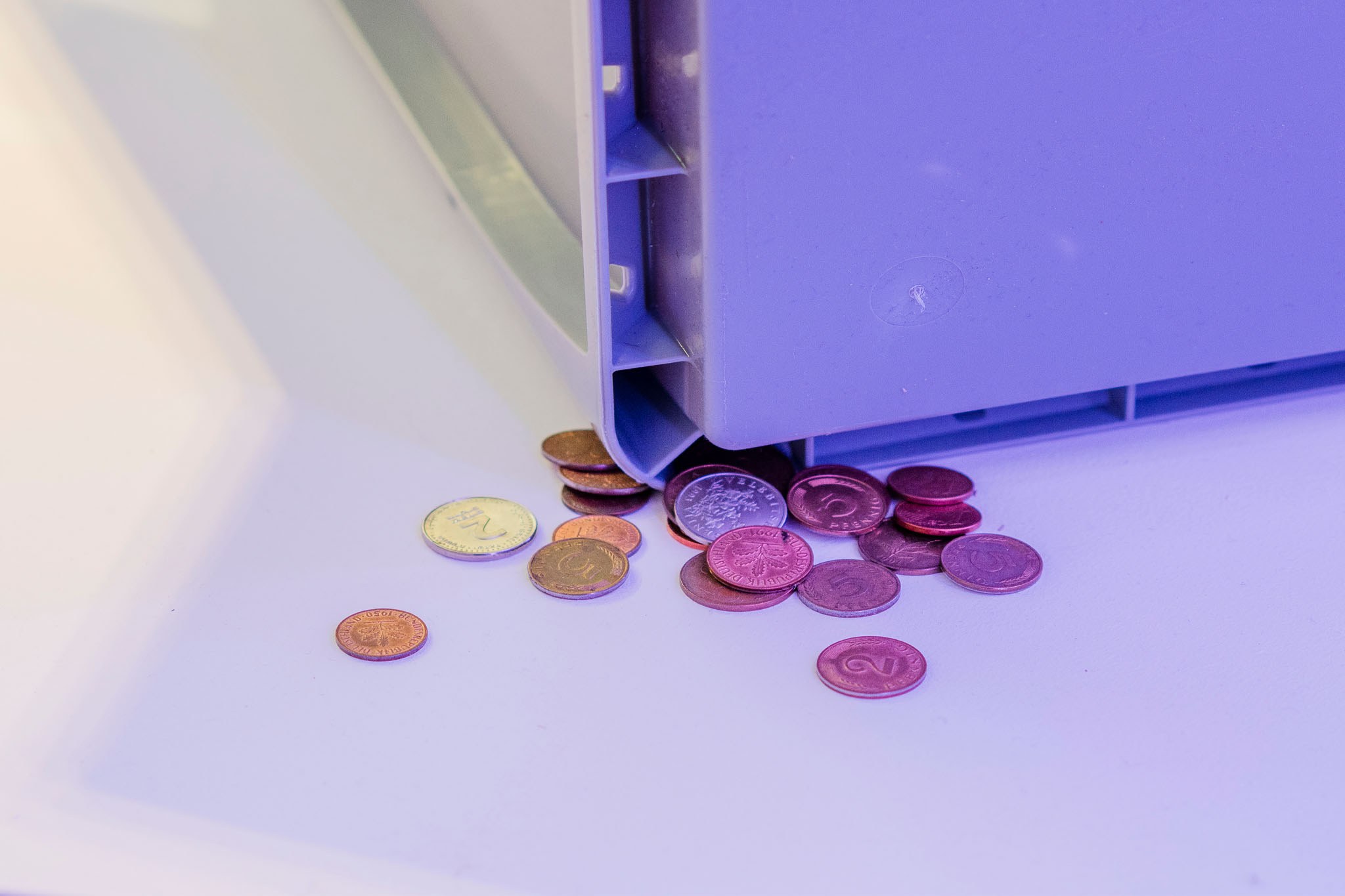
Black Palm – Sonja Cvitkovic, Daily Deals, New Toni, Berlin, 2022, Installation view
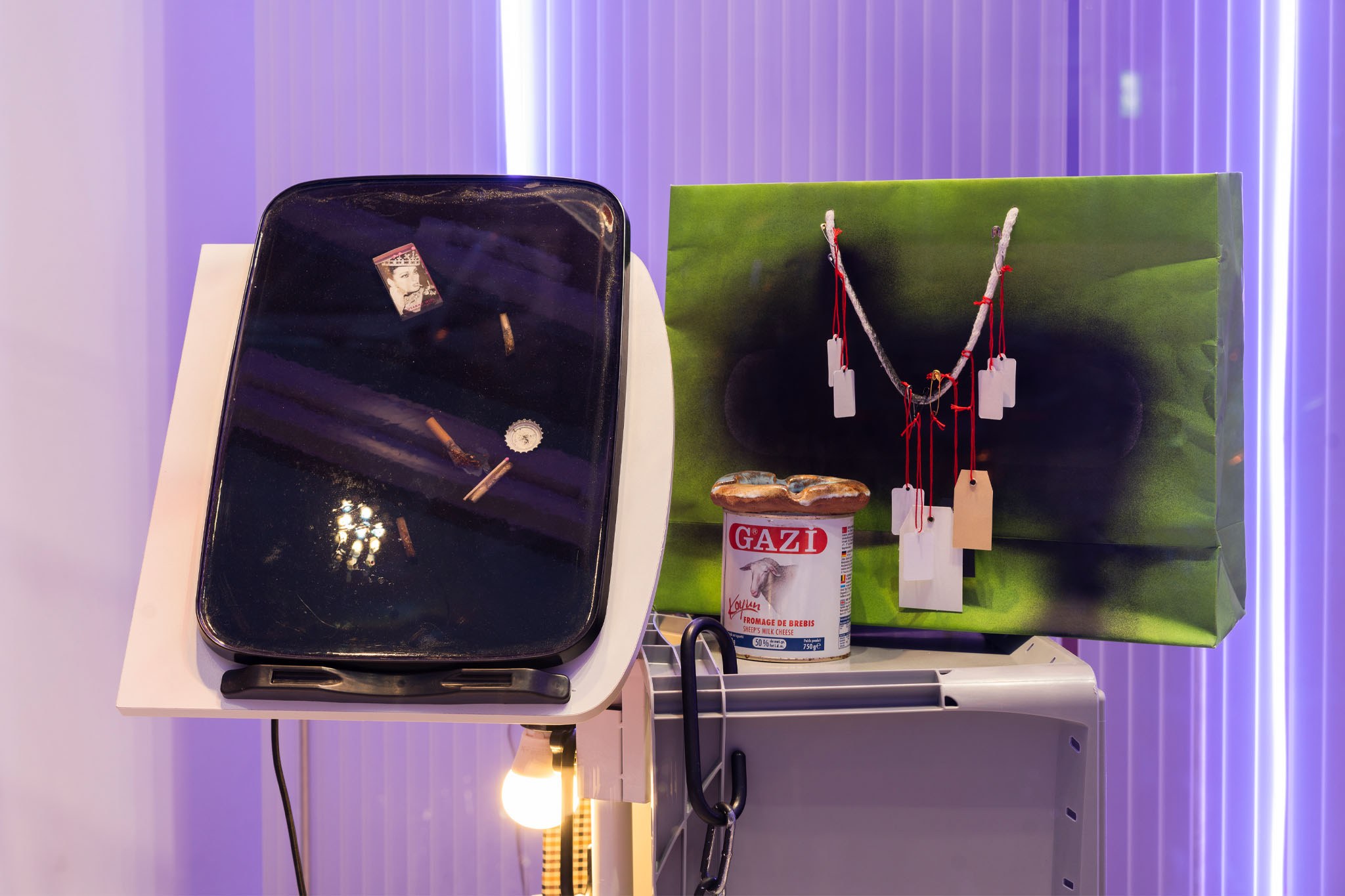
Black Palm – Sonja Cvitkovic, Daily Deals, New Toni, Berlin, 2022, tray by Hanna Schwarz (melamine resin, epoxy resin, cigarettes, paper, matches), ashtray GAZI by Michaela Meise (metal, glazed clay), bag by Sonja Cvitkovic (paper, metal)

Black Palm – Sonja Cvitkovic, Daily Deals, New Toni, Berlin, 2022, Installation view

Black Palm – Sonja Cvitkovic, Daily Deals, New Toni, Berlin, 2022, Installation view
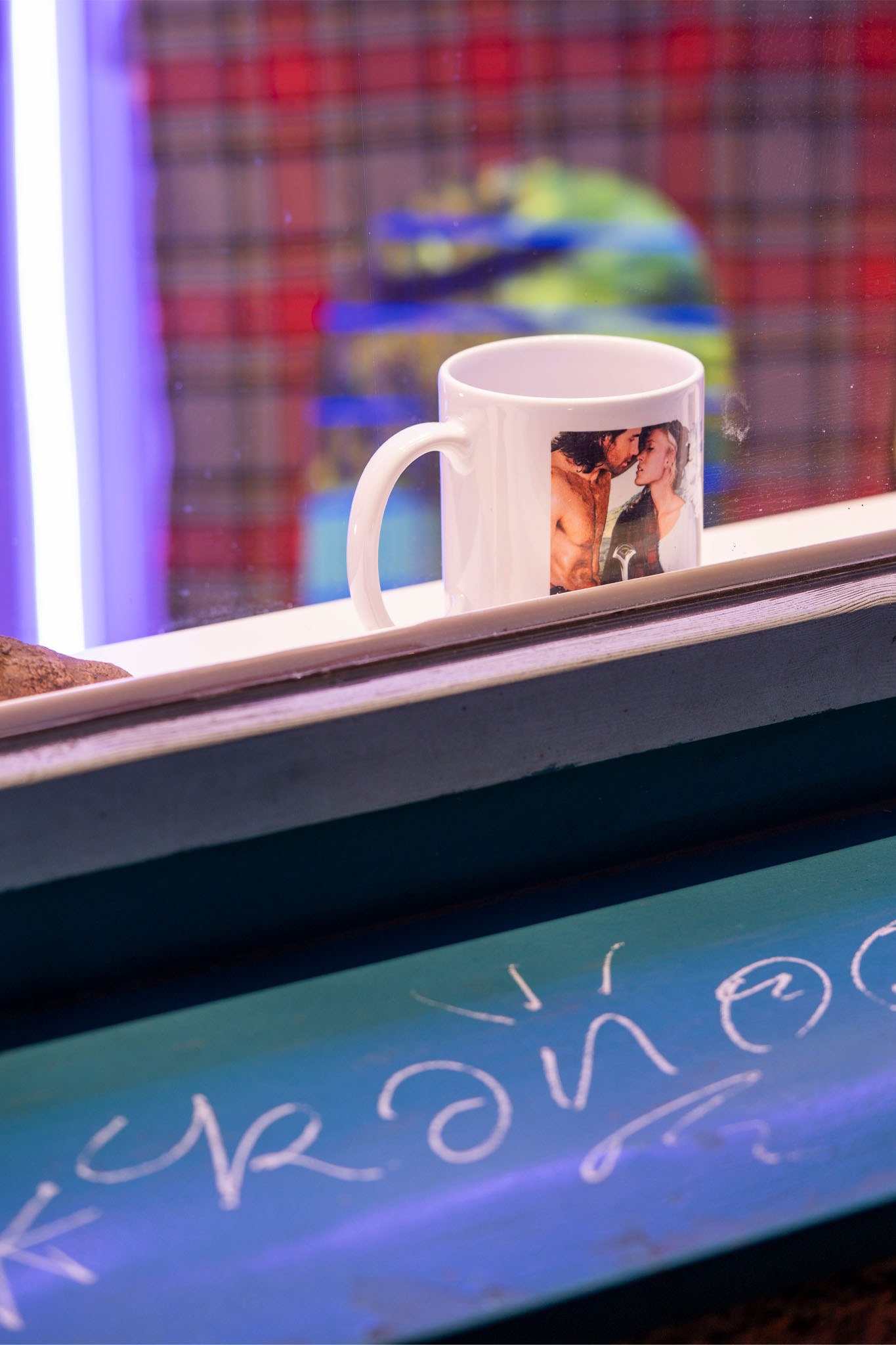
Black Palm – Sonja Cvitkovic, Daily Deals, New Toni, Berlin, 2022, Installation view, cup by Verena Dengler (ceramic, digital print)
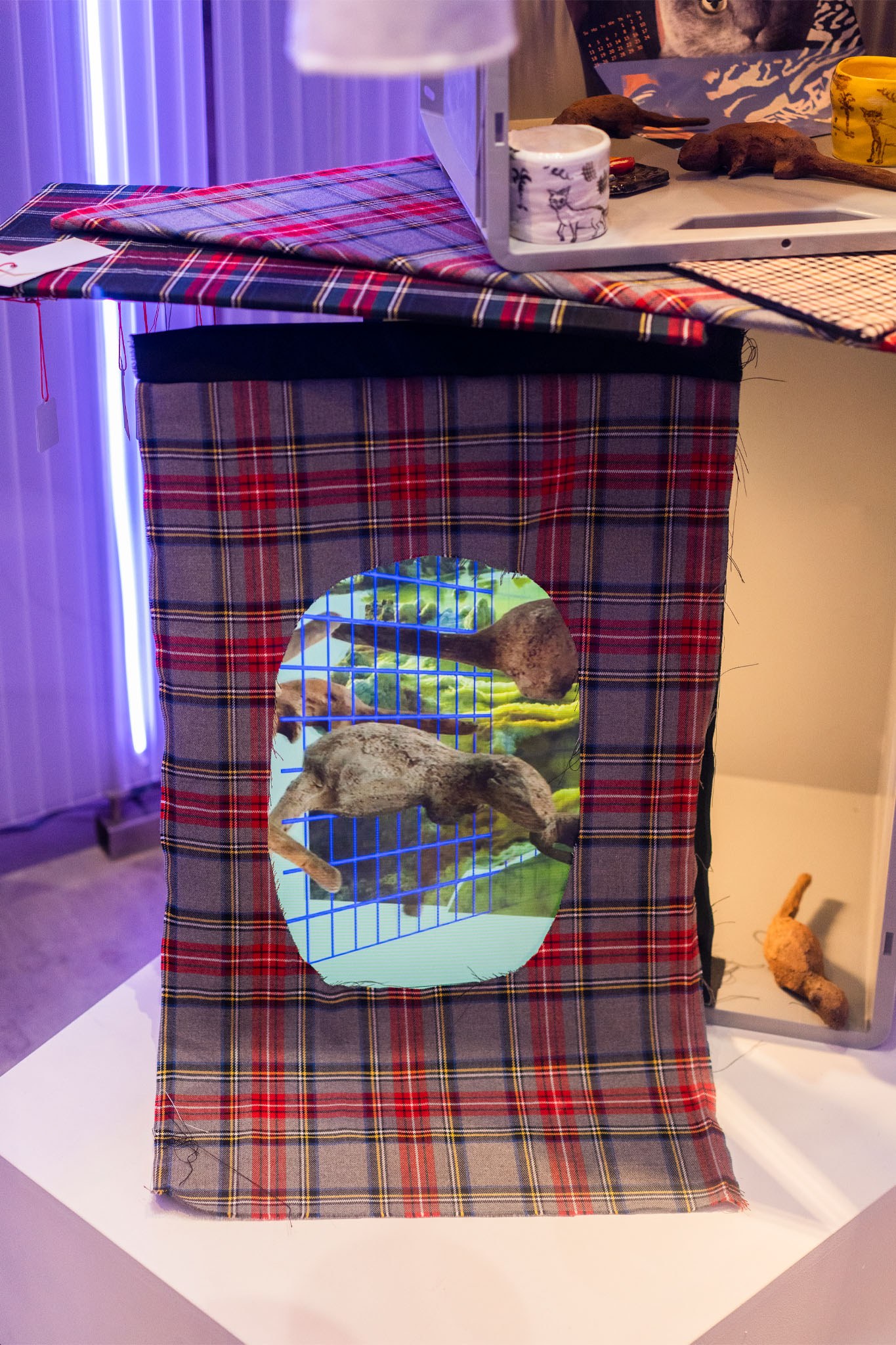
Black Palm – Sonja Cvitkovic, Daily Deals, New Toni, Berlin, 2022, Installation view, video by Sonja Cvitkovic
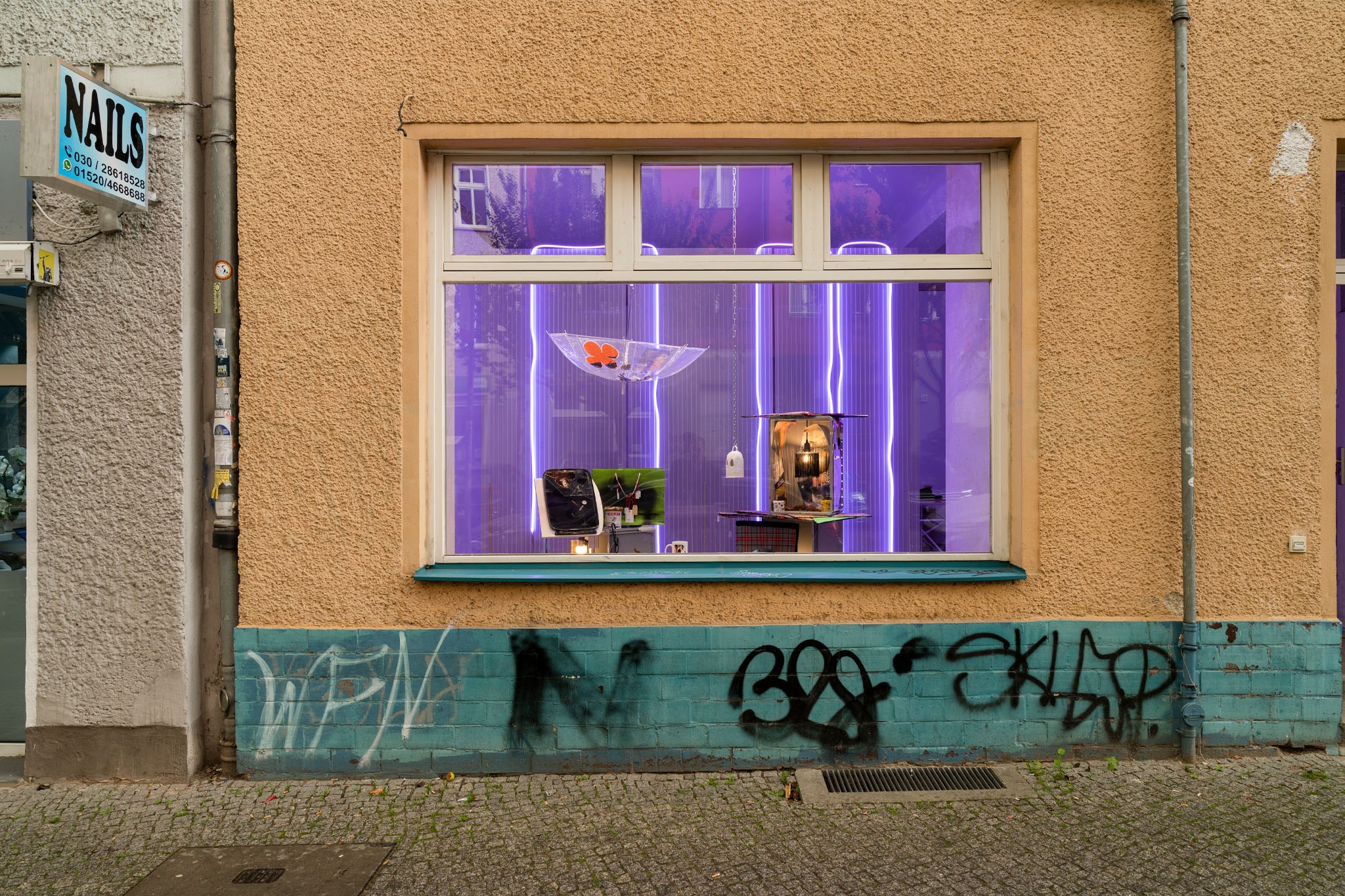
Black Palm – Sonja Cvitkovic, Daily Deals, New Toni, Berlin, 2022, Installation view
Daily Deals is an installation by Sonja Cvitkovic. Cvitkovic is an artist and founder of
the edition label Black Palm. In the installation she mixes her own artistic practice as
a sculptor with the editions by other artists she sells on Black Palm.
Deals are often made between multiple parties within a purpose-driven relationship.
The relationship is defined by normative categories and objects that facilitate actors'
sense of belonging and community.
In her book "Lost in Perfection", the French economist Ève Chiapello describes the
contradictions and the limits of optimization in society, culture and psyche and how
the ways of thinking and behaving of powerful actors are increasingly influencing the
ways of thinking of actors in the culture industry. In doing so, she proceeded from the
premise that financialization should be understood as a new phase of capitalism and
that the restless pursuit of the "perfect deal" leads to the financialization of one's own
thinking.
_________
Reflection Series
It is difficult to think of a more iconic collaboration between artists and department stores than the one that went on for decades at Bonwit Teller, which commissioned emerging and established artists to design their window displays. The standpoints and approaches were as varied as the artists involved. In 1936, for example, Salvador Dalí was appointed to design two window displays representing “Night” and “Day”. The latter was based on the Narcissus myth, displaying various reflecting surfaces, mirrors, held by arms protruding from the walls, and the water in a bathtub for instance. Dalí’s proposition shocked Bonwit Teller’s clients, who requested Dalí’s design be changed or cancelled. Ultimately, the manager quickly amended the display without warning the artist. An unholy scene followed as an enraged Dalí fell down while trying to reposition the bathtub, only to smash the shop’s window with it. His subsequent arrest didn’t last long at least. Leading Dalí to observe: “These are some of the privileges that an artist with temperament seems to enjoy.” (1)
Attempts to display an artist’s individual genius - and temperament - at Bonwit Teller’s window display were abandoned in the years after the Dalí incident, turning the commissions into a purely commercial service. Emerging artists such as James Rosenquist and Robert Rauschenberg designed the displays of Bonwit Teller, Tiffany, and Bloomingdales to sustain their artistic careers, splitting this commercial endeavour from their artistic practices. Such transactional work was a means of survival rather than an aesthetic choice, until a then-unknown Andy Warhol formulated the notion that artistic genius and consumerism need not be kept discrete, as both are governed finally by the same ideology: capitalism. In keeping with Warhol’s dictum that “art is advertising”, a gallery exhibition doesn’t differ that much from a window display; it turns whatever is on display into a consumable product.
The complicated relationship between commercial and artistic work has continued to transform over the ensuing decades. The collective K-Hole skipped over the traditionally “acceptable” jobs for artists - e.g. assistants to higher profile artists, teachers, physical labourers, bartenders, retail work, or food service work (2) - to create a hybrid practice offering a series of trend forecasting reports during the early 2010s. Greg Fong, Sean Monahan, Emily Segal, Chris Sherron, and Dena Yago expressed awareness of “the immediacy of recuperation, survivalism, and the deep-rooted anxiety brought on by the recession and student debt” (3), as well as the need to adopt critical distance in an increasingly discouraging landscape of cultural production. As Yago points out, artists who aren’t backed up by a privileged background or commercial success usually engage a strategic split between commercial and autonomous approaches. Isn’t this conception of a clean separation more delusional today than ever though?
Commercial language and self-realisation merge in Antonia Breme’s practice, too. Her years of experience as a window display designer have imbued her artistic position (and vice versa), making it difficult to spot where one component of her practice begins and the other ends. Her sculptures often look like display elements; yet, at times, the resemblance is a mere hint. Other times, the sculptures serve a function in the shop window, the inherently commercial nature of which, thus, gets hacked, in order to create structures of support and “relations of solidarity” (4).
For each iteration of Breme’s “Reflection Series” at New Toni, her display brings together different positions from other artists, all of whom relate to each other in a “cumulative sum” of words, ideas, and objects. In doing so, Breme allows holistic interactions, which wouldn’t happen if every perspective were shown independently. Unlike Dalí’s “branchy” arms, and his display referencing narcissism, and the singular artist's voice, Breme’s sculptural displays reflect a multiplicity of expressions together, and acknowledge the survivalist, interdependent, and entangled nature of contemporary art and its practitioners. Breme knows that vanity is unavoidable in the context of a window display, and that the viewer’s gaze often gets short-circuited by the contemplation of their own reflection in the glass. But, should the gaze manage to penetrate beyond the surface, the viewer would perceive that other hybrid forms of art production and display are possible.
1- Unknown Author, Dali's Display, TIME, March 27, 1939
2- Dena Yago, On Ketamine and Added Value, e-flux, Journal #82, May 2017
3- Dena Yago, On Ketamine and Added Value, e-flux, Journal #82, May 2017
4- Céline Condorelli, Too Close To See: Notes on Friendship, A Conversation with Johan Frederik Hartle, ed. Stine Hebert, Anne Szefer Karlsen (Open Editions London, 2013), 62-73
1. Text: exhibition text (no author to be named) / 2. Text: Gabriela Acha
